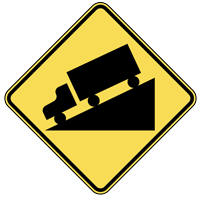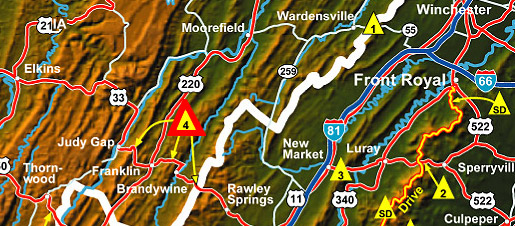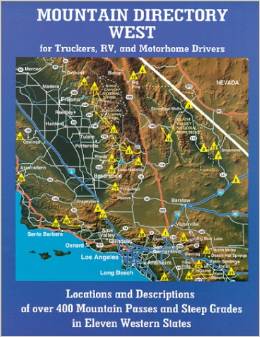If you’re from the East Coast of the US and have never driven your RV west of the Mississippi, you might be in for a scary surprise when you start climbing – then descending – America’s great peaks like the Rocky Mountains.

Instead of waiting for the smell of burning breaks to teach you the ropes of RV driving on steep mountain passes, turn to the Mountain Driving Directory series first and save thousands of dollars on your RV brakes later.
Since 1993 the Mountain Directory books have served as an essential guide to knowing what lies ahead on over 700 mountain passes and steep grades in 22 different states.
Consult the Directories while planning your itinerary in order to know essential information like:
- speed limits
- locations of steep grades
- grade lengths and steepness
- the number of driving lanes
- escape ramps, switchbacks, sharp curves and roadside pullout locations
Divided into two separate directories, Mountain Directory West and Mountain Directory East, each RV driving guide contains essential information that will prepare you to make the best route decisions based on your RV’s engine and towing capabilities.
“The purpose of these books is not to discourage drivers from going where they please. It is only to inform them of the conditions they may encounter and to encourage them to make sure their equipment is in good repair,” says R&R Publishing, creators of the Mountain Driving guides.

Both directories contain colorful relief maps with yellow triangle indicators that point out where each state’s mountain passes and steep grades are located and direct readers to the corresponding book page for more information. In the electronic versions of the directories that you can keep handy on your phone or tablet, users can click on the yellow triangles for instant descriptions of each notable location.
Why Every RVer Needs the Directory
Many RVers are under the assumption that the hilly mountains east of the Mississippi aren’t nearly as hazardous to RV brakes and transmissions as the steep peaks of the west, but this is a dangerous misconception. That’s because although Eastern mountains might not be as steep as in the west, “it is the change in elevation that makes a grade potentially hazardous,” not a location’s altitude, says R&R Publishing.

Stay safe and prepared, get your copies of Mountain Driving Directories today!
“A grade that descends from 4000′ to 1000′ over 10 miles is no different than a grade that descends from 10000′ to 7000′ over 10 miles. Either way you have a 3000′ change in elevation spread over 10 miles. (This example would result in an average grade of almost 6% for 10 miles.)” says the publisher.
Don’t wait for a scary, uncontrolled descent to teach you the value of the Mountain Driving guides. Buy your copies now to prepare for the road ahead and potentially save money on brakes and transmission repairs and even worse calamities.


Leave a Reply